
Before you start finishing your house from the outside, check the condition of the brickwork and repair everything you need. You may want to return the painted masonry to its original appearance (unless you live in a rural area where brick and stone are traditionally painted). Although some paint removal solutions do not cope with a deep texture, there are also paste-like compositions that can peel off the old paint from the brickwork.
Processing of new brickwork
New brick or masonry should be left to dry for about three months and only then be taken for further processing. During this time, a white plaque may appear on the surface, called fading, but it can simply be cleaned off with a hard brush or dry burlap (see below).
New brickwork should be weather-resistant and do not need additional processing, unless you want to paint it in accordance with the customs of a particular area.
Removal of organic formations
The spread of mold, fungi and lichens indicates dampness, and their appearance does not bode well.

- Try to identify the source of dampness. For example, if the sun never appears from some side of your house, pruning overhanging branches can help the situation, which improves the ventilation of the wall.
- Make sure that the waterproofing layer is in working condition and it is not blocked by a pile of earth or a pile of garbage.
- Another common cause of organic formations and growths are wall streaks from damaged downpipes. Feel the back of the pipe or inspect it with a hand mirror.
Neutralization of fouling
Scrape off the organic formations with a non-metallic scraper, then with a hard brush. Work is dusty, so wear a respirator. To prevent dust particles from getting into your eyes, clean the bricks with movements away from yourself.
Starting from the top of the wall, apply a fungicide solution liberally on it with a nylon brush. Leave the surface to dry for 24 hours, then rinse thoroughly with clean water. In difficult cases, treat the wall with a fungicide twice with an interval of 24 hours.
Removing fades
As the walls dry, the dissolved salts contained in building materials — cement, brick, stone — move along with water to the surface. As a result, a white crystalline plaque appears, called fading, or efflorescence.

The same thing can happen with old brickwork if it is in conditions of increased dampness. By itself, the fading is harmless, but the source of moisture must be installed and eliminated.
These deposits should be regularly cleaned off the wall with a dry, hard brush or a piece of coarse burlap until the plaque ceases to appear. Do not try to wash them off — they will simply dissolve in the water and re-absorb into the wall. In addition, do not finish the wall with fading, as their presence means that the wall is still wet.

Facade paints and transparent sealants that allow the wall to “breathe” are resistant to the effects of alkaline masonry components, so they can be applied without prior priming.
If you will use a paint based on an organic solvent (oil), pre-cover the wall with an alkali-resistant primer.
Cleaning of masonry
Wash off surface dirt with water. Strong solvents can damage the masonry, so consult with an experienced builder before resorting to anything other than water.
Wall washing
Starting from the top of the wall, pour a gentle stream evenly over the masonry, at the same time cleaning it with a hard brush.

Clean difficult areas with a solution of ammonia (half a cup per bucket of water), then rinse again. Try not to wet the masonry too much if frosts are coming soon.
Removing stains
Soften the stains of tar, tar, oils with a stain remover made of clay moistened with white spirit or a special fat solvent.
Wearing protective gloves, wet the stain with a solvent, and then cover it with a layer of stain remover. The thickness of the layer should be approximately 12 mm. Secure a piece of polyethylene with adhesive tape on top and leave it until it dries completely. Scrape off the dried coating with a wooden or plastic spatula, then clean the wall with a brush moistened with water.
Removing paint stains
To remove the stain of paint splashed on the wall, use a special rinse. Wear old clothes, gloves and safety glasses to work.
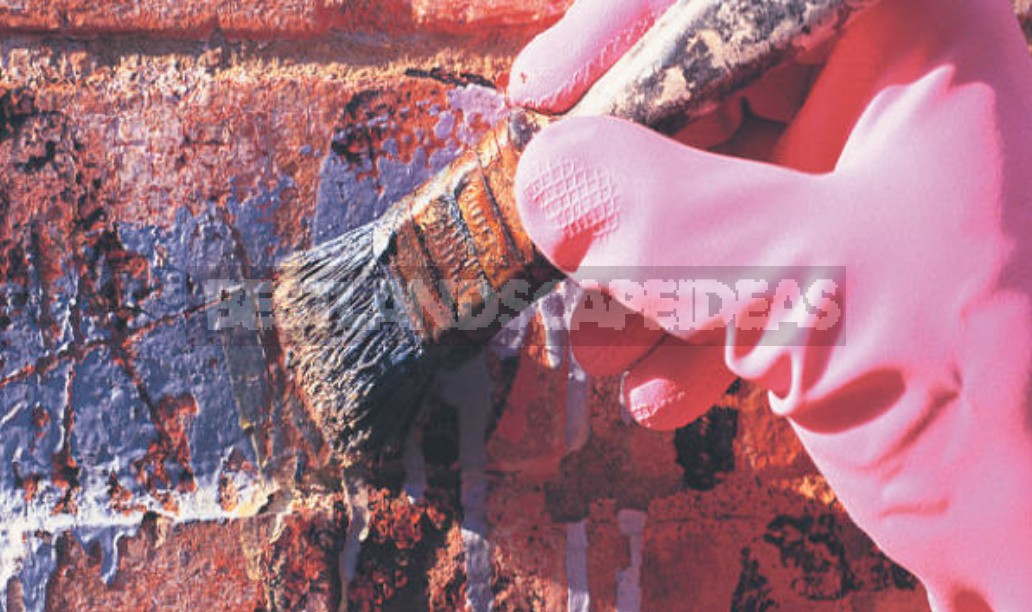
On a rough surface, apply the wash with poking movements of the brush. After softening the paint, clean it off with a scraper. Clean deep cracks with a hard brush with water. Rinse with clean water.
Cleaning of painted masonry
Inside the house, the painted masonry is usually in fairly good condition. In addition to the fact that it must be well washed from dust and dirt and lightly sanded to prepare the surface for a new finishing coating, it is unlikely that you will have to do anything else. Outside, however, things are different. On external surfaces exposed to heat, cold and precipitation, spots, peeling and chalky plaque appear.
Chalk spots
Run your palm along the wall to see if chalk deposits appear on it. If there is a powdery coating on the hand, the wall should be prepared before starting finishing work.
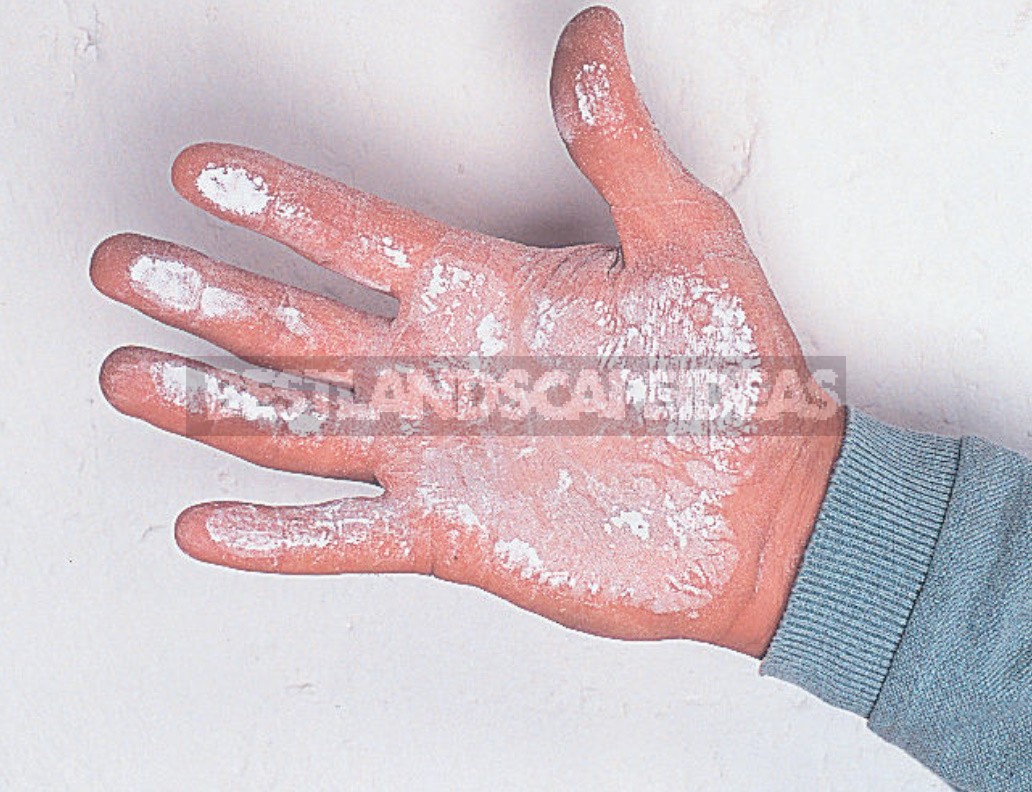
Clean the surface with a hard brush, then cover it abundantly with a stabilizer primer, which will bind the chalk deposits, ensuring good adhesion of the surface to the paint. Wash the splashes that have fallen on the wooden parts with white spirit.
If the wall is very “swept”, after 16 hours, apply a second layer of stabilizer and wait another 16 hours before painting the wall.
Peeling of paint
Peeling of paint is most often the result of poor surface preparation or incompatibility of paint and preparatory compositions.

Damp walls can also contribute to peeling, so before further processing, eliminate the source of dampness and allow the wall to dry.
Use a scraper and a hard brush to remove all straggling material. A rough sanding skin will rub the edges of the most unsuitable areas. Before painting, treat the wall with a stabilizer.
Cleaning of stains from the chimney
If the brick rows of a painted chimney have a brown edging, you can be sure: the inner surface is damaged. This allows soot and soot to penetrate through the seams of the masonry into the outer layer of paint. To solve the problem, first insert the protective lining of the chimney into the pipe, and then treat the dark spots with an alcohol-based aluminum primer before painting the pipe again.
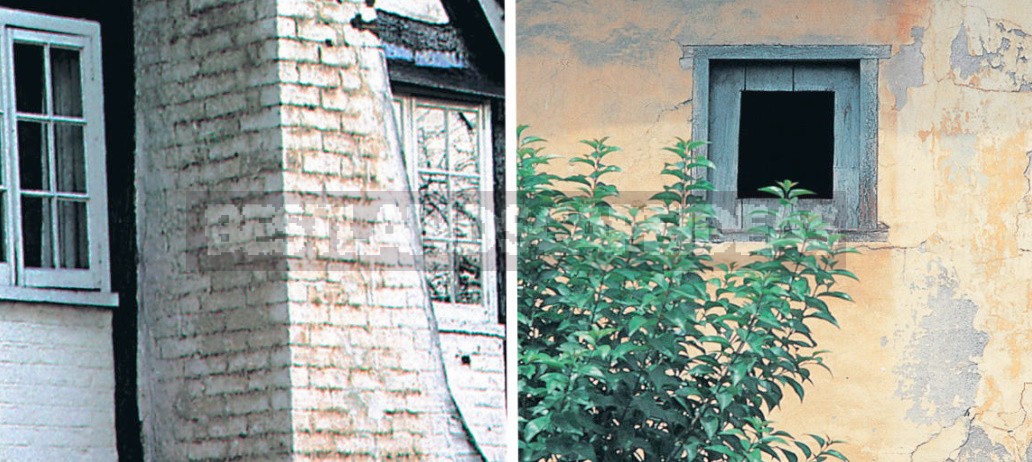
Removing paint from masonry
In the past, even strong and reliable brickwork was often painted just to make the house look more elegant. In those places where the painting of brick walls has become a tradition, there is no reason to break it. Houses made of soft, low-grade bricks were painted to protect them from the weather, and removing the paint can lead to serious consequences. However, one painted brick house in a row of unpainted ones spoils the entire street.
Restoring painted brickwork to its natural state is not an easy task. This is usually dirty work with the use of toxic materials. You may need extended construction scaffolding. And the most important thing is that the complete stripping of brickwork requires a lot of experience. As a result of all this, it is recommended to resort to the help of professionals.
To understand how good the result will be, ask the company whose services you are going to use, first clean the part of the brickwork that is not too conspicuous with the help of the chemicals used by it. As a result, it may turn out that it is better to paint everything again. In this case, choose a high-quality facade paint that allows the moisture contained inside the walls to evaporate.
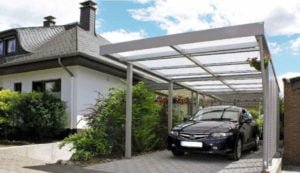

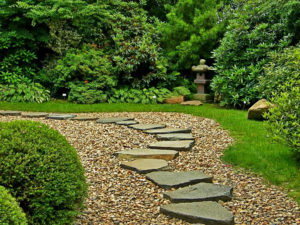

Leave a Reply